Search results
6 results found.
6 results found.
The Basilica of San Nicola in Carcere is way more than just another cool underground site in Rome.
That's because while the church's subterranean ruins are neat—and more on them in a moment—one of the most interesting things about San Nicola is that you don't have to go underground, or even inside, to see the church's ancient origins.
Just look closely at the exterior (pictured above*). See those columns on the left (pictured again below)? Those are from the Temple of Spes, or Hope, built all the way back in 250 B.C. The two middle columns, which blend into the current facade of the basilica? They're from the middle temple, built in honor of Juno in the 2nd century B.C. and rebuilt in 90 B.C. And the columns all the way on the right? They're the remnants of the Temple of Janus, the god of gates and beginnings, dating to a restoration by Tiberius in 17 A.D.
Unlike in other churches around Rome, these columns aren't ancient because they were brought here as part of the basilica construction. Instead, they were here first. And the church was simply built right into them.
To make that all clearer, here's an overlay of the basilica with the original temples.
The church itself probably dates back to the 6th century, but it was redone a number of times, most drastically in 1599. So even though the interior is lovely (below), the really cool part of the whole thing—at least for geeks like me—is the basement. 
For a measly 2 euros (or, if you want a brief guided tour in English or Italian, 3 euros), you can descend beneath the altar, into the crypt… and then into rooms beyond. I visited for the second time today, and there was nothing like being alone with these ruins.
What's down there? The bases of the temples, of course! Remember that the ground level has risen in Rome—particularly here, next to the flood-loving Tiber River—so what was ground level in the first centuries A.D. is now below-ground. (That's the basis, of course, for all of the "underground ruins" here in Rome. Except for the catacombs, which were obviously dug to be underground to begin with). So it's here, not above, that you can see the actual podiums of the various temples.
Granted, that translates into big tufa blocks and brick walls, and not much else. So for artistic merit alone, sites like Palazzo Valentini and the Columbarium of Pomponio Hylas still win. But here's what the San Nicola in Carcere ruins have going for them: They're old. Really old. Older than any of that stuff (in fact, they're some 500 years older than the villas at Valentini). That's because they're Republican-era temples, not Imperial—and that's pretty special to see.
My favorite part is the last room, where you can see the base of the Temple of Janus on the left and that of the Temple of Juno on the right. In between, there's an ancient Roman path that would have run between the two, complete with a series of small cells, once built into the temple's axis, that likely were ancient currency exchange offices. In ancient times, after all, this was a bustling market area: During the Republic, the three temples formed the centerpiece of the Forum Horitorium, where fruits and vegetables were sold.

Ah, I do love a church with ruins. Don't you?
San Nicola in Carcere is located at Via del Teatro Marcello 46, near the Jewish Ghetto, Trastevere, and Piazza Venezia. Here's a map of the location of San Nicola in Carcere. Both the church and the ruins are open daily from 10am-5pm. Visiting the underground alone costs 2 euros; they give you a basic information sheet (there's one in English, too) and there are various English and Italian informational signs underneath, so while it's much easier to have it explained to you, you could scrape by on your own if you wanted. If you want the brief tour, in (not necessarily great) English or Italian, it's 3 euros. What a bahhh-gain!
You might also like:
The Renaissance's Bloody, and Papal, Borgia Clan

It's no secret that Rome is a city chock-full of the ancient past. Reminders of a city, and empire, of 2,000 years ago aren't just rife in the Forum, Palatine and Colosseum, but beneath churches like the Basilica of San Clemente and San Nicola in Carcere, acting as the main event in open spaces like the Park of the Aqueducts, and even serving as forums for everything from ballet and opera to light shows and displays. In short, ruins are everywhere.
Maybe that's why some of my favorite ancient ruins in Rome aren't the big, famous monuments. They're the little bits of antiquity that you simply stumble across: an ancient column sunk into the wall of an otherwise-unassuming apartment building, a still-running fountain with a wornaway face that you just know must be 2,000 years old. These can be tough to find. That's part of the fun.
Here, I'll share with you my favorite "secret" bits of antiquity, tucked into street corners and buildings all across the city.
Can you guess where—and what—they are?
I've now published all of the guesses in the "Comments." To see how close you were, scroll to the bottom of this page for the answers!
Ready? Set? …Go!













Answers:
1) I started off with a stumper: This elaborate ancient column is at the Via della Maschera d'Oro and Vicolo di San Simeone, located in ancient Rome's Campus Martius. No one quite knew what this one was!
2) A couple of you got this. This is a detail of the lovely Arco degli Argentari, or "Arch of the Money-changers," commissioned by the local money-changers and merchants who were active in the area's Forum Boarium. The arch, which was finished in 204 A.D., was built in honor of Emperor Septimius Severus, as the inscription—just to the right of the bas-relief of Hercules holding a lion skin—says. In the 7th century, the arch was incorporated into the Church of San Giorgio in Velabro.
3) This one was tricky, but it's one of the coolest ruins around. This is—wait for it—one of ancient Rome's fire stations. Truly. In particular, it's the barracks for Brigade VII, and dates back to the 2nd century A.D. The brigade was in charge of not only preventing and extinguishing fires, but public safety, too, particularly at night. It's located at Via della Settima Coorte, 9, in the heart of Trastevere. (When you go, bring a flashlight to look through the grille underneath: You can still see one of the big rooms of the barracks).
4) This is a piece of the Virgin Aqueduct, the famous aqueduct built by Agrippa in the 1st century B.C. and that supplies water to the Trevi Fountain. Believe it or not, this original piece is just off Via del Tritone; turn on Via del Nazareno, at the Burger King, and look down and to the left.
5) Yep, this was a "duh"… but it was so pretty I had to put it in. This lovely ancient column is located on Via Margana, just a few steps from Piazza Venezia.
6) Lots of you got this. This is a big chunk of the 4th century B.C. Servian Wall, located at the Termini train station (if you go inside Termini, you'll see more of it in on the lower level, including a big piece by the McDonald's).
7) These ancient columns and frieze are sunk into the building at Via di Capo di Ferro, 31, just off the Piazza della Trinità dei Pellegrini.
8) An ancient portal on Via Margana, in Rome's Rione XI of Sant'Angelo, just a few steps from Piazza Venezia.
When it comes to Rome in summer, let’s get back to basics: what the weather in Rome in June, July, August, and September is really like… and how to deal.
In this first installment of the Rome summer guide, you’ll find out about some surprising ways to beat the heat, why Rome’s water fountains are freakin’ awesome, which of Rome’s sights have nada shade, why dressing skimpily isn’t always the answer, and—of course—what that heat is a great excuse for (hint: it comes in a cup or a cone…).
Want to survive enjoy Rome in summer, at the height of its temperatures? Read on!
Rome in summer? Hot? Um, yes (at least for this New England girl). Rome’s average temperature in both June and September reaches a high of 81° F. The heat peaks in July, with a high of 88° F. And August isn’t much cooler, at 87°.
Figuring out the neighborhoods of Rome can be a little confusing. Even though it’s a big city, most tourists spend most of their time in the centro storico — and that’s where most hotels are, too.
But simply looking for accommodation in Rome’s “historic center” isn’t enough. That’s because the center is divided by neighborhoods, some of which feel pretty different from the next.
So you’ll need to know not only that you want to stay in the historic center… but which neighborhood to stay in in the centro storico, too.
If you want to stay in the centro storico, you first need to know… what is the centro storico.
Technically, the centro storico is the area of Rome that’s bordered by the 3rd-century Aurelian walls and by the mura gianicolensi, which include the Vatican walls. There aren’t many good maps online that have the walls clearly delineated. This is one of the best I could find.
The thin, black line running around the entire center is the Aurelian walls. (You can find it by looking at the square marked “Castro Pretorio” in the upper right-hand part of the city). Although the neighborhood and monuments are all ancient Roman, you can get some perspective by looking for the Colosseum (a little ring almost right in the center), Circus Maximus (to the southwest of the Colosseum), and the Tiber.
This area—which includes not only the Colosseum and forum, but the Spanish Steps, Piazza del Popolo, Piazza Navona, Pantheon, and Vatican — is the historic center. And if you’re staying in Rome, this is where you’ll probably want to stay. (Nota bene: There are, of course, many other, perfectly pleasant neighborhoods in Rome outside of the historic center. But I’m sticking to the centro storico here just because it tends to be most conveneint for most people).
Now, for the neighborhoods. (I recommend opening a tab with Google maps and keeping it handy so you can refer back and forth!).
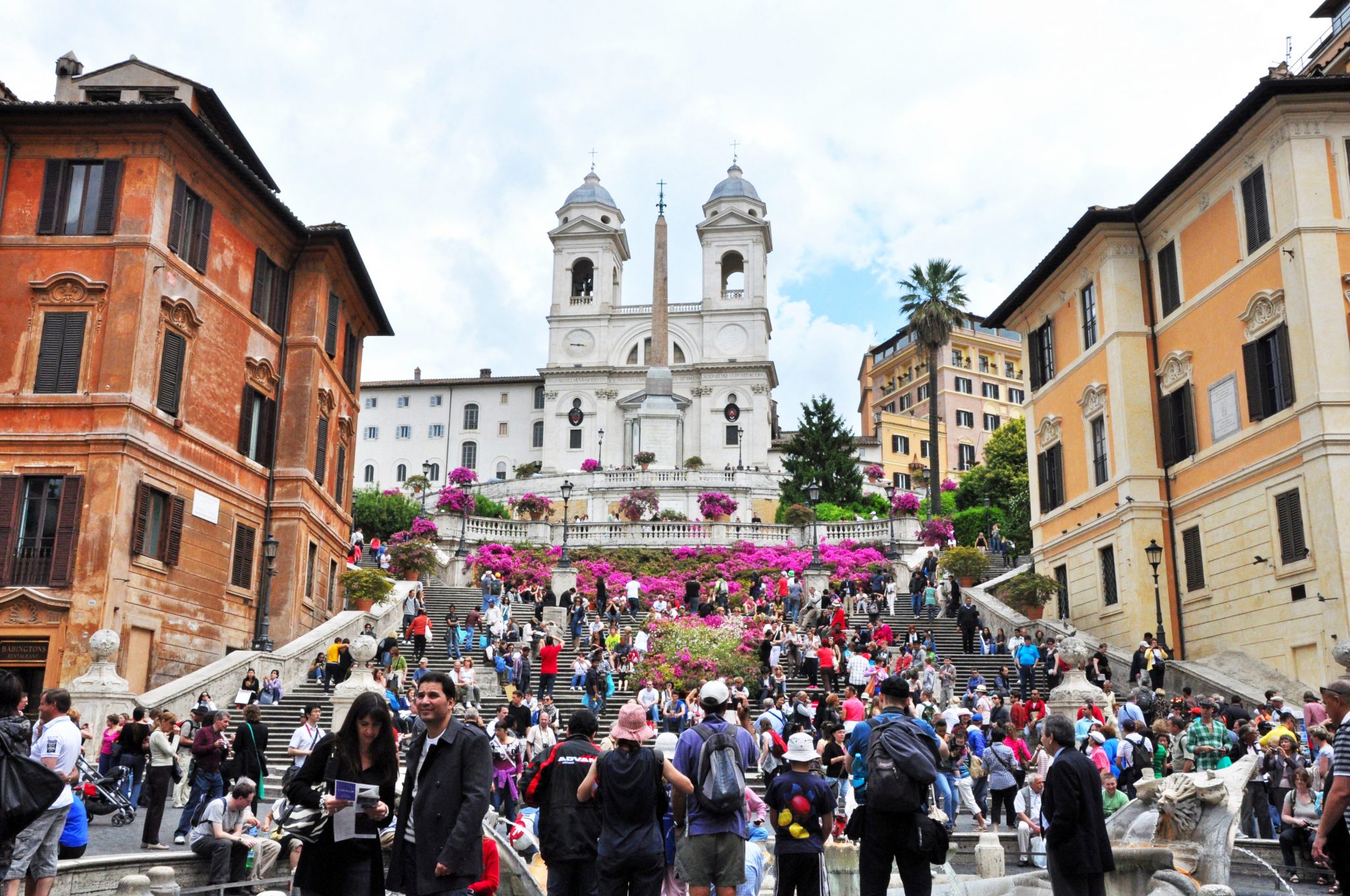

This isn’t technically a neighborhood, but I’m using it as shorthand for the central area that most people think of when they think “Rome”—the triangle with Piazza del Popolo in the north, the Spanish Steps and Trevi Fountain to the east, and the Pantheon and Piazza Navona to the west.
This stunning area is home to cobb where most people want to stay. Of course, it’s also where hotels are the most expensive, where the streets crowd with tourists and shoppers, and where 99% of restaurants are overpriced and mediocre. On the other hand, every corner looks like a postcard. Hey, you win some, you lose some!
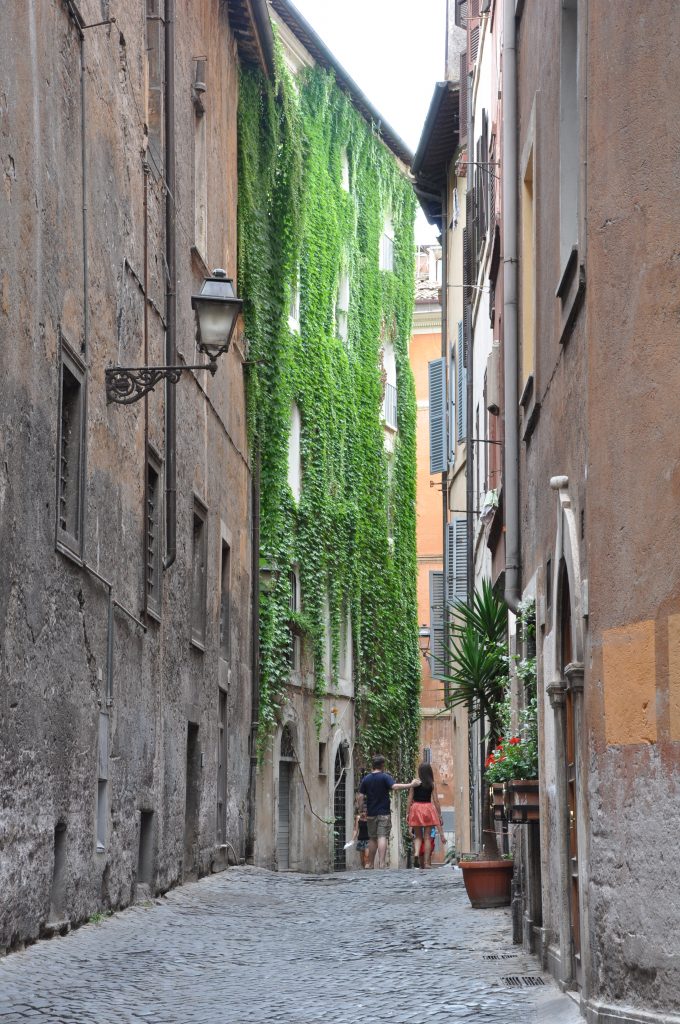

This northeastern corner of the historic center is home to the winding Via Veneto. The street is famous for its hotels—although most seem, at least to me, to be huge and overpriced. Meanwhile, the rest of the area, especially near the Barberini and Repubblica metro stops, feels like a big city.
For the most part, forget cobblestones and quaint churches. This is where the buildings are tall, the streets wide, and the passersby businesslike.
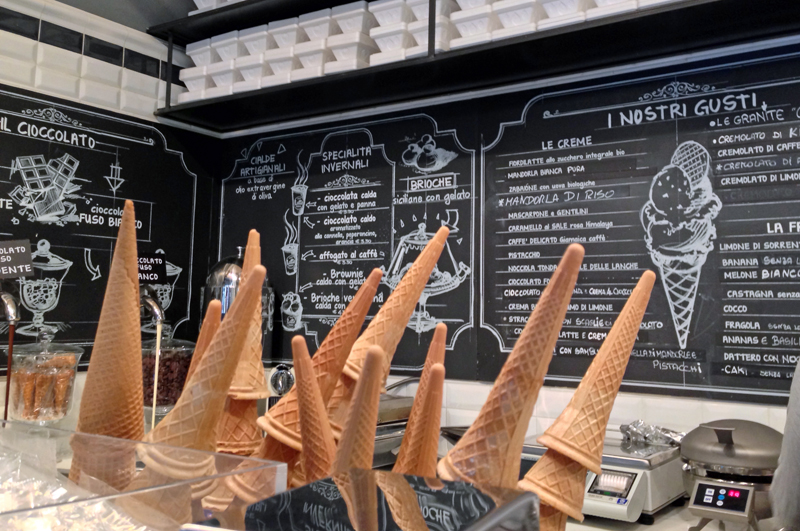

Although some hoteliers diplomatically call this neighborhood “Monti,” anything from Piazza Vittorio Emanuele to Santa Maria Maggiore and northeast to the Termini train station is, more properly, the Esquiline hill. In general, the neighborhood here tends to feel gritty and look grungy. This is where you’ll see immigrants hawking counterfeited purses, homeless people huddling in corners, and garbage littering the street.
It’s also home to many of Rome’s cheapest hotels, hostels and B&Bs.
The area tends to be perfectly safe. Rome is, as a whole, much safer when it comes to muggings and violent crimes than pretty much any city in America, as well as Dublin, London and Paris. But it may not be what you imagined when you first pictured Rome. Also keep in mind that, while it may seem very convenient to stay near the train station, and while that means this area is well-connected by metro and bus, it’s not within easy walking distance of most of the major sights, like the Pantheon and Piazza Navona.
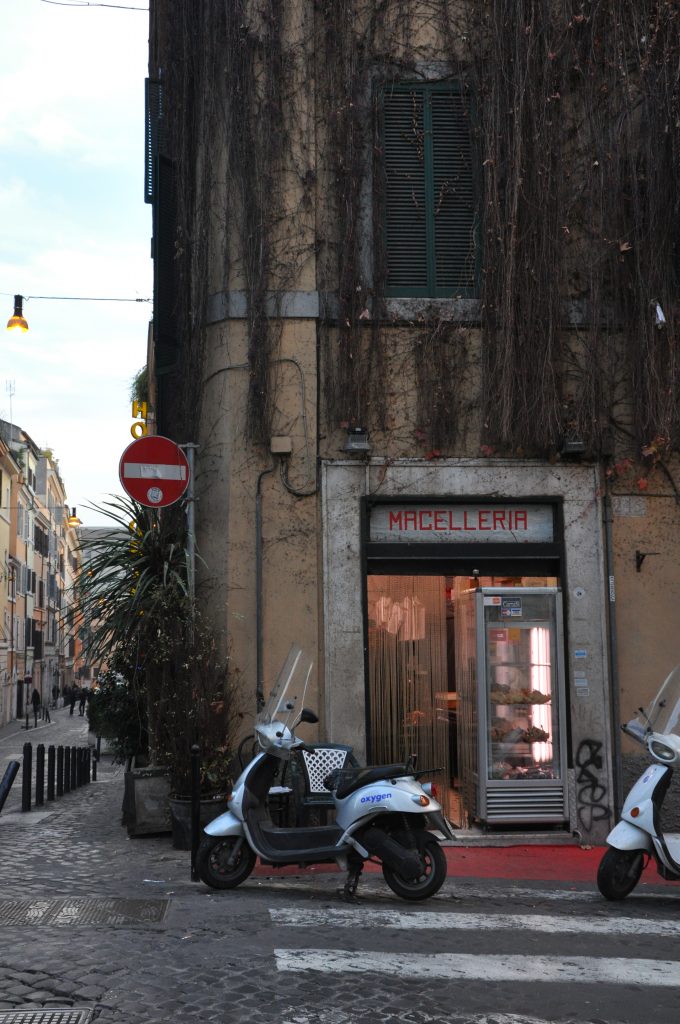

In ancient times, this rione was the red-light district, home to gladiators and prostitutes (Julius Caesar even moved there to show he was “one of the people”). Today, it’s a gorgeous little neighborhood filled with medieval palazzi, cobblestoned streets, and an eclectic mix of traditional trattorie and hip boutiques.
If you want to stay here, look at the area bordered by Via Nazionale (to the west), Santa Maria Maggiore (to the north), the Colle Oppio park (to the east), and the Roman forum and Colosseum (to the south).
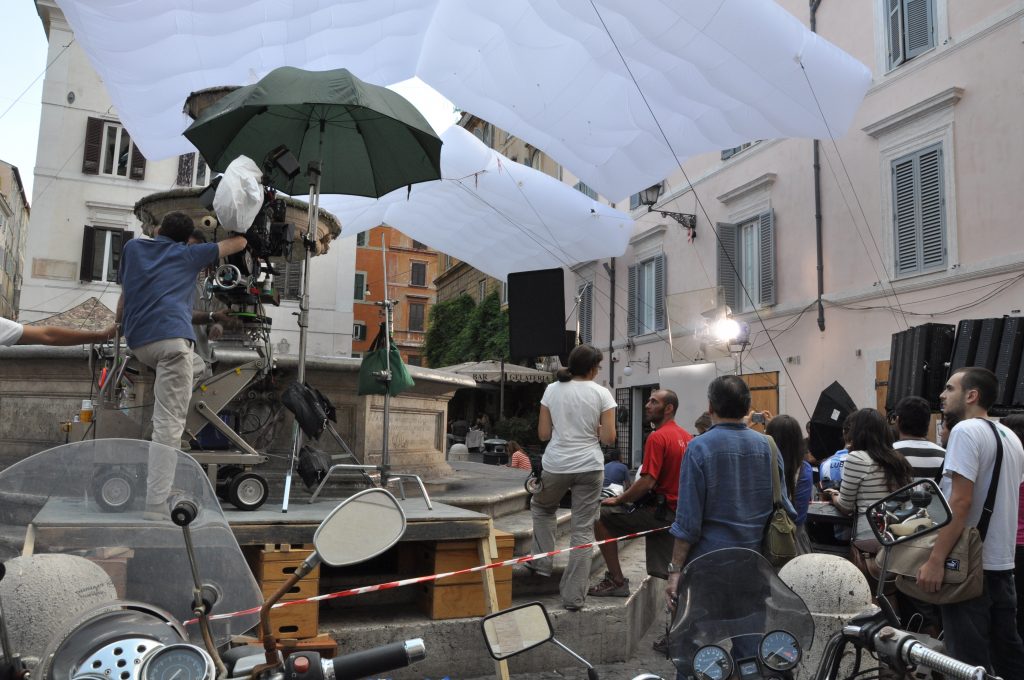

Further southwest of Monti is Celio, another rione with a strong history. The couple of blocks right around the Colosseum tend to be touristy and busy during the day, but the rest of this area, which stretches southeast to the Basilica of San Giovanni in Laterano, feels quiet and residential. I lived here for four years, and I still think it’s one of the most underrated areas of the city.
This hill, just south of the Circus Maximus, is home to some of the loveliest streets and homes in Rome. Its small size and exclusivity mean there are few hotels and B&Bs here. It also doesn’t feel like it’s “in the middle” of anything, thanks to its greenery and the fact that it’s at least a 15-minute walk to most of the major sights.
This neighborhood is really a sliver, tucked just to the south and west of Circus Maximus. The neighborhood has some wonderful sights — including the Church of San Giorgio in Velabro, the Arch of Janus, and the Church of San Nicola in Carcere — and it’s just a three-minute walk to the Jewish Ghetto and Piazza Venezia. It’s also tranquil, lovely and off the beaten path.
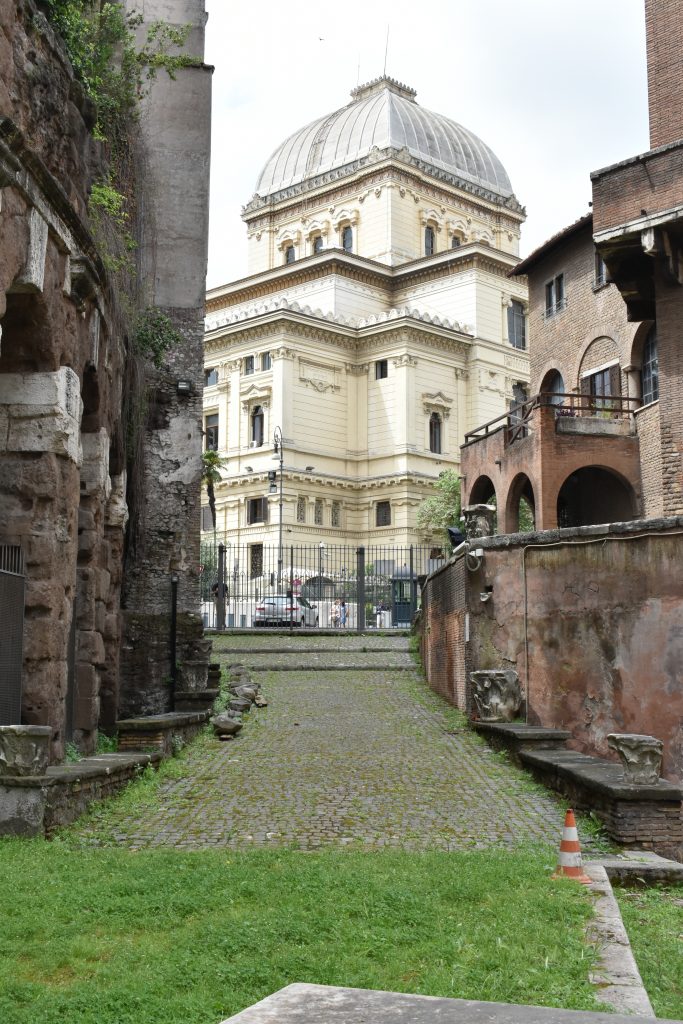

From Piazza Venezia to the Tiber, you’ve got beautiful ancient ruins, the Jewish Ghetto, lively Campo dei Fiori, and my favorite piazza in Rome, Piazza Farnese. This district has the atmosphere (and history) of the area around Piazza Navona and the Pantheon, with half of the people.
Just over the Tiber from Campo dei Fiori and the Ghetto is Trastevere, an atmospheric district that, today, is as likely to be home to American study-abroad students, expats and wealthy Italians as the working-class and bohemian Romans who once lived here. Still, the neighborhood remains charming. There are plenty of corners and tiny streets where life is still lived much as it would have been decades ago.
If you find the center of Rome’s centro storico too confusing and chaotic, consider Prati. This area around the Vatican, just over the river from sights like Piazza Navona and Piazza del Popolo, was laid out in the 19th century, so its grid system and wide boulevards look more continental and, well, organized than the rest of Rome.
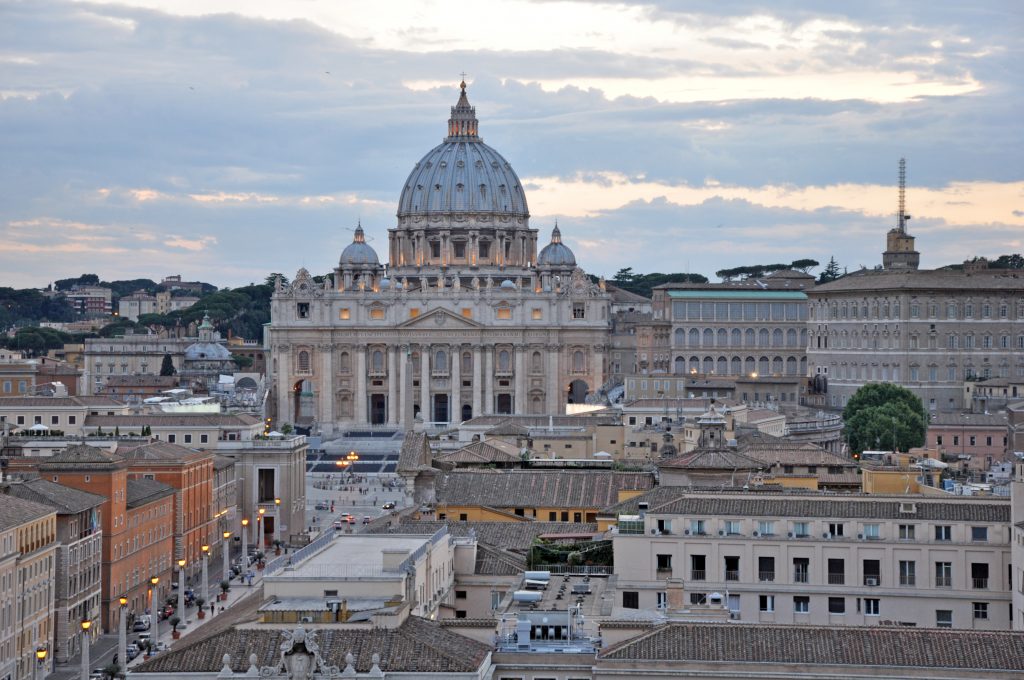

The area right around the Vatican museums and St. Peter’s is extremely touristy. But once you get a little farther away, authentic restaurants and the rhythm of daily life in Rome abound. It’s also easier to find cheaper accommodation here.
Just south of the Aventine, the Testaccio quarter is one of the least touristy in Rome — and has some of the best restaurants and bakeries in the city. The ancient area, which gets its name from “Monte Testaccio,” a hill that literally was created because it was a dump for ancient Roman amphorae, can feel more modern and gritty than the center of the city. But it’s perfectly safe, cheaper than the center, and convenient: Thanks to the metro and lots of buses here, you’re just 5 to 15 minutes away from Trastevere, the Colosseum, and the heart of the historic center.
Also: six of the best trattorias in Rome, how to act like a local and where to find that perfect souvenir or gift in the city.
If you liked this post, you’ll love The Revealed Rome Handbook: Tips and Tricks for Exploring the Eternal City, available for purchase on Amazon or through my site here! I’m also free for one-on-one consulting sessions to help plan your Italy trip.
Sightseeing with kids in Rome? The bad news: Because of their skew towards art, history, and archaeology, some of Rome’s sights can seem less than immediately child-friendly. The good news: There’s enough here to keep kids entertained and happy. If you do it right. Truly.
Here are some things to keep in mind if you’re sightseeing in Rome with children.
Kids hate standing in line as much as adults do. They’re just (usually) worse at hiding it. So make sure you avoid the lines at the top sights. At the Colosseum, use a RomaPass or get your ticket at the Palatine or Forum entrance; at the Vatican, cough up the extra €4 (yes, per person) and book your Vatican museums tickets in advance.
I’ve said it before: Rome is a city best explored by walking. That might be fine if you have a super-energetic 10-year-old. But traveling with a toddler? You’ll definitely want a stroller.
Just bear in mind that Rome is a city of cobblestones and ruins. Translation: Any stroller you bring should have nice, sturdy wheels. It should also be light, because you’ll sometimes wind up having to fold it up and carry it—at the Colosseo metro stop, for example (there’s no elevator, just stairs), or at your B&B or hotel (many have tiny elevators, or sometimes no elevator at all).
Also keep in mind that you won’t always be able to use your stroller. They’re forbidden in St. Peter’s Basilica, for example (you can check them before you enter). So it might be a good idea to also bring a backpack child-carrier.
One thing not to worry about? Getting strollers on and off buses and public transportation. Yes, it can be daunting—but you’d be surprised at just how many strangers will help you with the task.
I promise that they exist. Some favorites:
Palazzo Valentini makes ancient Rome come alive in a way I haven’t seen in Rome before; because it’s very dark, which can scare little ones, it’s best for ages six and up.
I haven’t done this yet myself, but at Gladiator School, kids (and adults) can try their hand at being gladiators, donning their tunics and duking it out with foam swords. Talk about making history hands-on. Apparently, even toddlers can participate.
Exploring the “hidden” ancient ruins beneath Rome’s churches, like at San Nicola in Carcere or the Basilica of San Clemente, turns a church visit into an Indiana Jones-style adventure for older kids.
For children who like the creepier side of things, the catacombs are as spooky as they get. You’re lucky if you see a bone, though (most were cleaned out by relics-seekers and grave-robbers years ago), so for that, head to the Capuchin Crypts, where the walls and ceilings are decorated with bones and the actual bodies of the deceased on display.
The “Mouth of Truth” is pretty goofy—it’s a possibly-ancient marble image of a face that gained worldwide fame after Audrey Hepburn stuck her hand in in Roman Holiday. And there’s always a line in high season. But I know I dragged my dad there when I was 13.
These days, Piazza Navona is essentially a breathtaking tourist trap. But the square does buzz with street performers and caricaturists, making it a draw for families. And during Christmas season, it’s home to Rome’s most famous Christmas market.
Like at the Vatican museums. Which—let’s be honest—can be tough with kids: There aren’t many places to sit, eat, or go to the bathroom, and unless you sprint through the long halls, it’s tough to get in and out in less than two hours, minimum.
Given that, one part you don’t want to miss? The Egyptian section, which even displays a 3,000-year-old mummy with her hair and toenails still preserved. (Ew!).
I mean, yes, the finer points of Renaissance art are lost on most 6-year-olds. But there is always some way to bring it down to your child’s age level. (This is coming from someone who spent a childhood of being endlessly entertained in art galleries and historical museums. No, I’m not being sarcastic. And it’s due to my family, who seriously tried to always make sure I connected, somehow, with what I was looking at. Thanks, Mom!).
Case in point: Old Master paintings. Of saints. In a museum. Not something you’d assume was child-friendly. Right?
But maybe it can be. Maybe you can, say, find an art guide to the museum—a book in the bookstore, or even just the museum brochure—and your 7-year-old can try to find the “matches” of the images in the brochure with the paintings she sees on the wall.
Or maybe you and your 10-year-old can play a game of “name that saint,” since artists generally characterized different martyrs and saints in consistent ways (St. Jerome is usually old with a red hat and a lion nearby, St. Peter has the keys, St. Sebastian holds some arrows). Or maybe your 13-year-old will be intrigued by the gory stories of why the martyrs are depicted that way (St. Sebastian has arrows because… he was shot full of arrows during his martyrdrom!). Or maybe, if neither of you know, you can try to figure it out and retell what you think is going on in the painting.
Or maybe you just give your kid a sketchbook and your whole family spends 20 minutes sitting and drawing in front of a painting that catches your eye.
Seriously. You can make almost anything fun. And when all else fails, well, there’s always that coloring book/iPhone game you brought along.
Telling stories about saints and martyrs is a lot easier when you know the stories. Oh, you don’t?
That’s when a tour guide comes in handy.
A great, enthusiastic tour guide can bring art and sights to life, for both adults and kids. In Rome, one sights where I think that’s an especially valuable option is the “ancient city,” i.e. the Colosseum Palatine and Forum. After all, there’s so much storytelling potential here: The history of these sights is full of blood and gore, treachery and romance, pagan rituals and horrible punishments. And (did I mention?) it’s all true!
But if you don’t know the stories yourself, or if you have a dry audioguide, or guidebook, or tour guide, then all of that gets lost. And that’s a shame. So no matter what tour company you go with, just make sure their guides get top points for being exciting and enthusiastic.
I promise that after you’ve had a guide bring the ruins to life, your child will be psyched for the “ancient Rome” unit in school.
Another tour I’ve come across that’s perfect for kids is Walks of Italy’s Rome food tour with pizza-making class and gelato. Yes, these are the guys I used to blog for; they’re also the only tour company that offers a Rome food tour that includes not only tons of tastings and a market visit, but a hands-on pizza-making class. Pretty fun, especially for children.
Rome’s parks offer, obviously, green space for kids to run around (or rest) in. And (bonus!) they often sneak in “cultural sites,” like ancient ruins or Renaissance villas, too.
If you’re near the Colosseum, for example, considering taking a rest or a picnic in the Villa Celimontana, a 16th-century estate turned public park that’s strewn with the remnants of ancient temples and palaces, including columns, statues and a temple altar. There’s even an ancient Egyptian obelisk inscribed to Ramses II from the 13th century B.C.
Near the Spanish Steps and Piazza del Popolo? Head to the Villa Borghese, Rome’s answer to Central Park. It has fantastic museums, but also fountains, a (small) pond where you can rent boats, lots of shade, and the opportunity to rent those funny pedi-cabs you can pedal around the park. In Trastevere, the Villa Pamphili has plenty of space for little ones to run around.
Farther out, the Appian Way is a park where you can rent bicycles and bike along the 2,300-year-old Roman road, checking out spooky catacombs along the way. And the Park of the Aqueducts is a cool glimpse of how ancient Romans brought water into the city.
Churches in Rome aren’t just holy sites. They’re treasure troves of painting and sculpture, mosaic and relics, even ancient ruins. Oh, and they’re free.
Which means you must visit at least some of them during your time in Rome.
The problem, of course, is that there are also hundreds of Rome churches…. literally. Which can make it a little tough to figure out which churches in Rome to visit.
Here is my list of 12 Rome churches that, whether because of their ancient ruins or 12th-century mosaics, happen to fascinate me the most. I’ve chosen ones that are beyond the obvious — so no, you won’t find the Sistine Chapel and St. Peter’s Basilica here.
If you make it, just make sure to double-check the opening times. There’s nothing more disappointing than arriving at a Rome church midday, only to find it (or a key part of it) closed — and many of these smaller churches tend to shut from about noon to about four. Also, keep some change with you, as some of them have frescoes and mosaics that you can light up if you pop a coin in the machine.
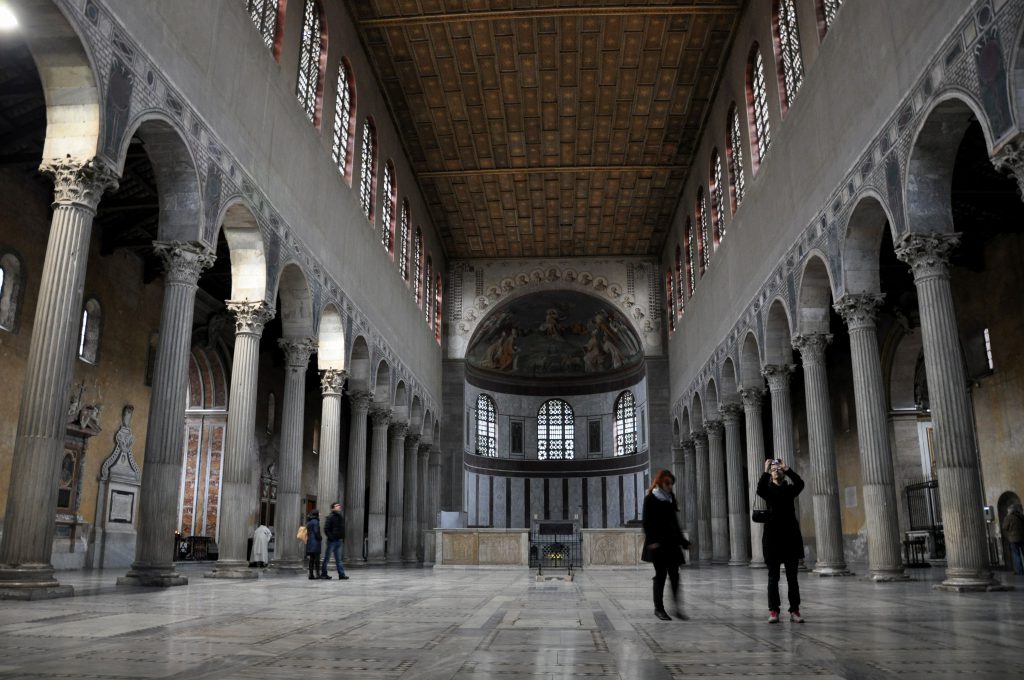

There aren’t many churches in Rome that still look like they originally did — especially if they were first built in the 4th or 5th centuries. Most were significantly rebuilt later, especially in the Baroque period. (If you think every Rome church looks over-the-top, that’s why. In that period they really went for… baroque. <sorrynotsorry>).
But not the Basilica of Santa Sabina, on Aventine hill. This 5th-century church has been left largely untouched — meaning you can experience an ancient church largely as it would have looked like at the very start of organized Christianity. It still has its original, elaborately-carved wooden door and mosaic dedication, a cell belonging to St. Dominic later turned into a chapel by Bernini, and even underground 4th- to 2nd-century B.C. ruins (accessible by tour only).
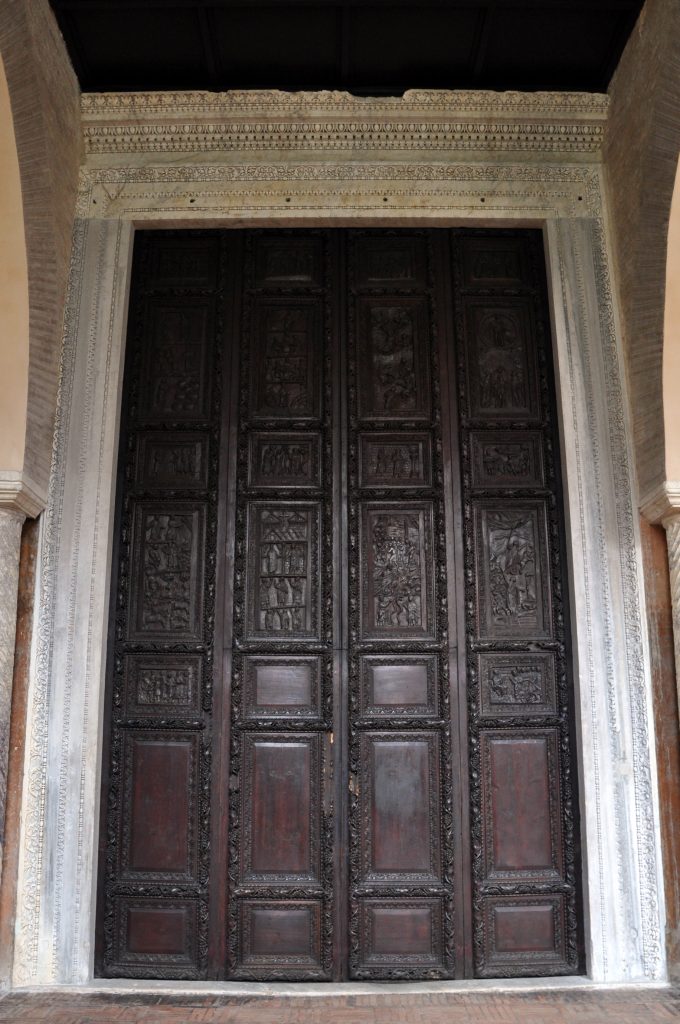

You don’t have to be an organized-religion lover to love this church. You just have to enjoy time travel.
Pro tip: After visiting the church, head next door to the Garden of Oranges for beautiful views of Rome — and then to the keyhole at the Order of the Knights of Malta for a very special photo op.
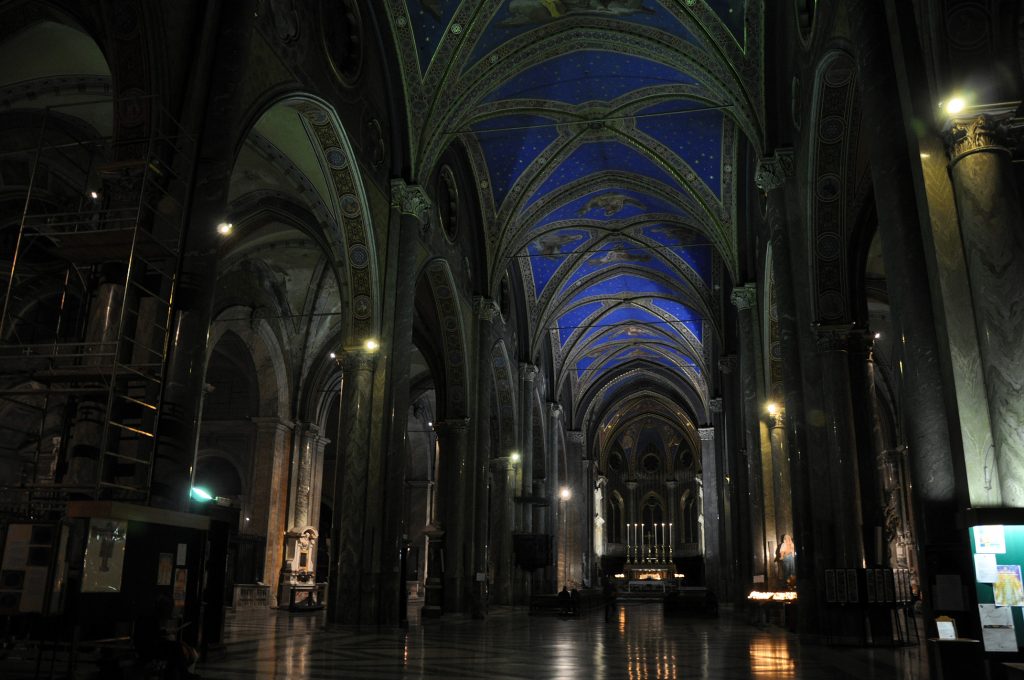

This stunning church is one of Rome’s very few Gothic churches, meaning it has a completely different style (one much more at home in, say, Paris) than the rest. I also absolutely adore its night-sky ceiling — that blue is such a vivid splash of color.
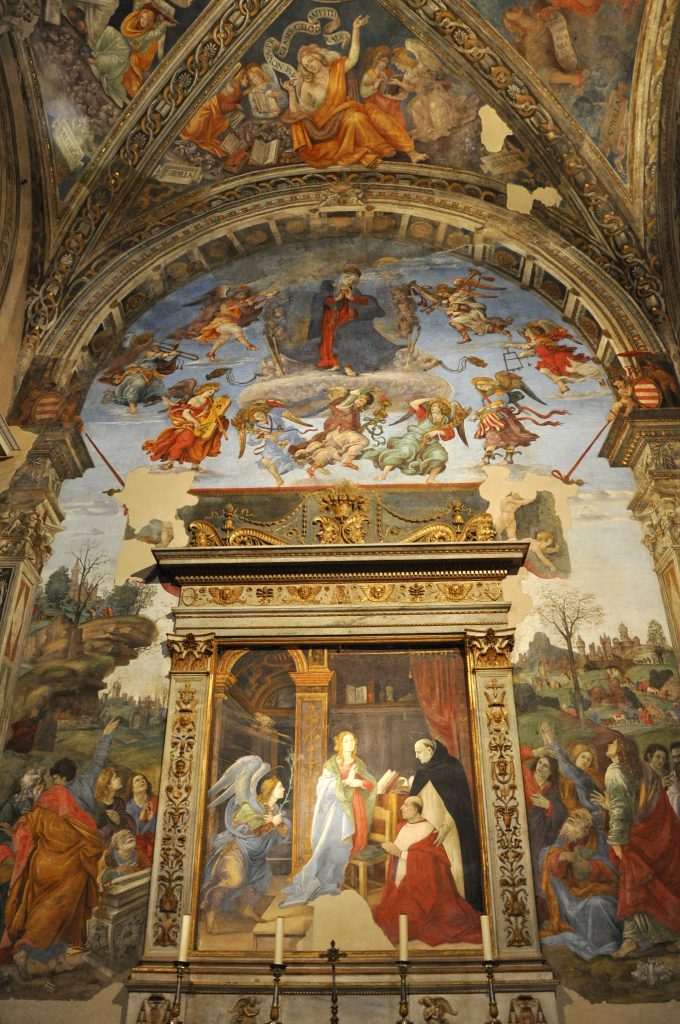

But that isn’t all that Santa Maria Sopra Minerva has to offer. It’s also got a sculpture by Michelangelo (…okay, more likely by his students), the body of St. Catherine of Siena (her head is in Siena…), and my favorite: lovely 15th-century frescoes by Filippino Lippi. They’re as beautiful as any Botticelli, and much more overlooked.
If that weren’t enough, I guarantee you’ll be passing right near this church anyway — it’s next to the Pantheon.
Pro tip: Don’t miss the bizarre sculpture of an elephant holding up an obelisk outside. The elephant is by famed Baroque sculptor Bernini — and the Egyptian obelisk dates back 2,500 years.
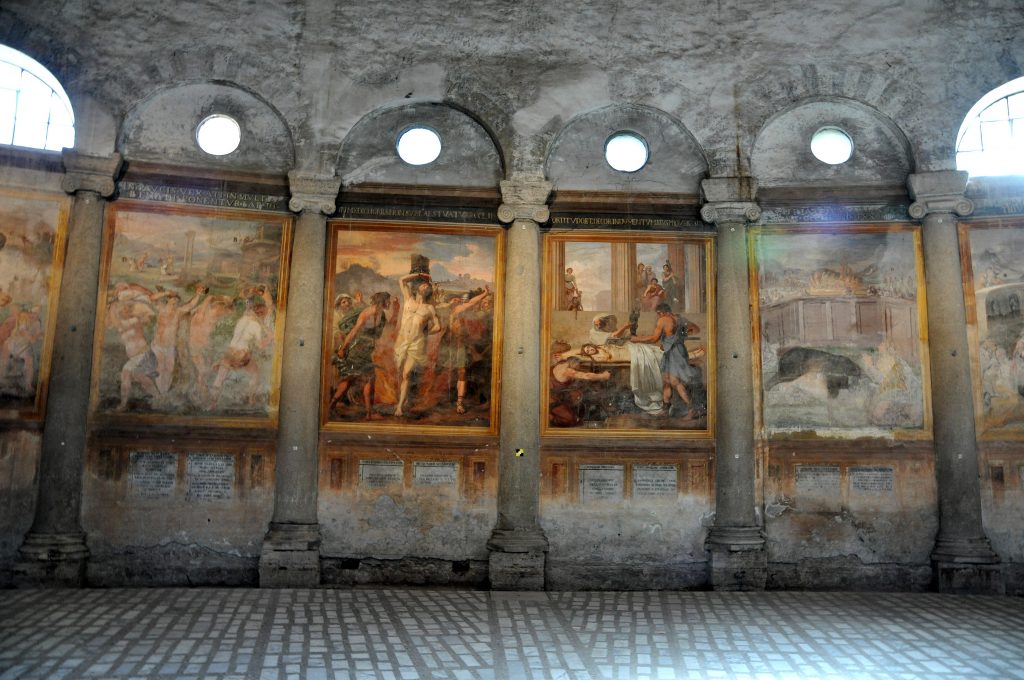

For strong stomachs only, the Basilica of Santo Stefano Rotondo, on the Celian hill, is decorated with 34 16th-century graphic frescoes depicting martyrs in all stages of torture. Even for the martyrdom-loving Catholic Church, it’s a pretty unusual sight.
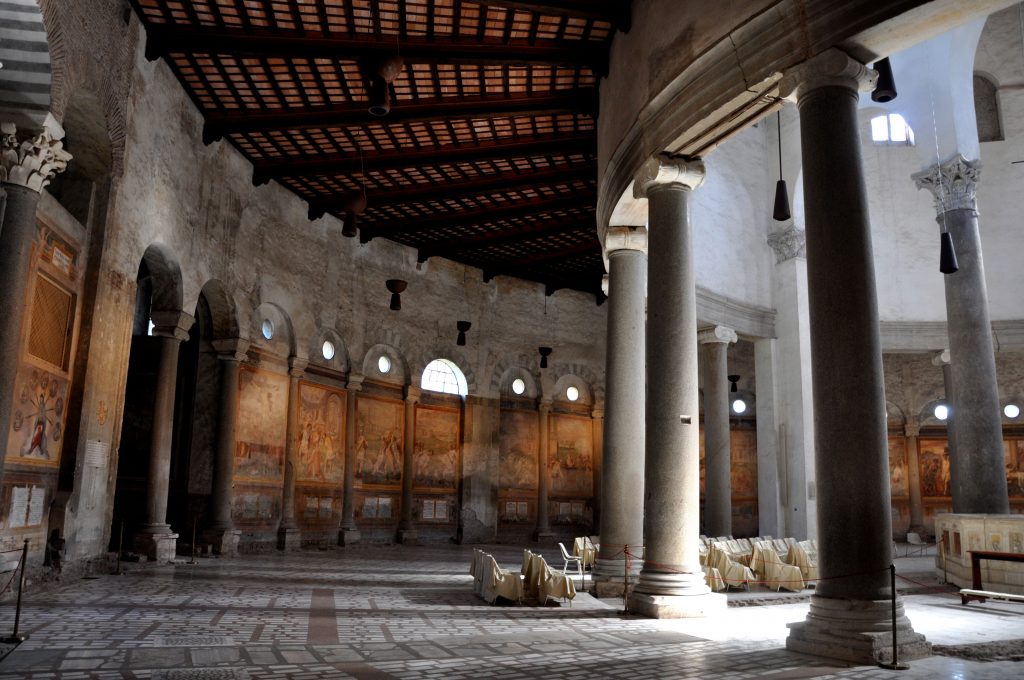

For those less gruesomely inclined, there’s another great reason to go: one of of few round churches in Italy, it was modeled after the Holy Sepulchre. Dating back to the 5th century, it still has a 6th-century mosaic too.
Pro tip: It’s easy to take an off-the-beaten-path stroll that hits up Santo Stefano Rotondo, San Clemente and Santi Quattro Coronati (see below).
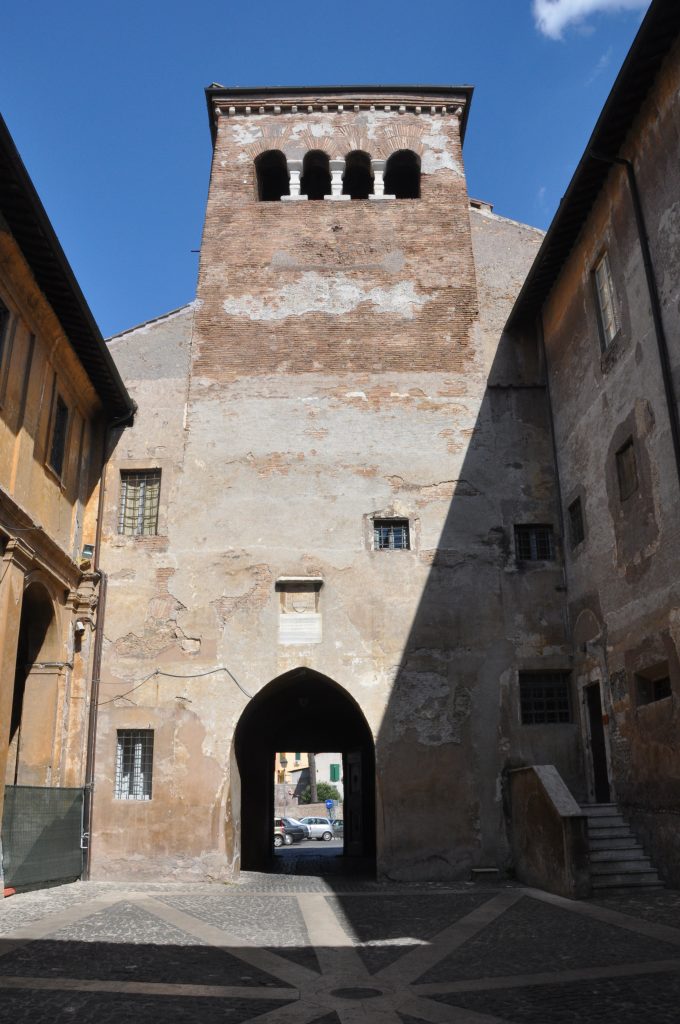

Looming over the neighborhood of the Celio, in the shadow of the Colosseum, the Basilica of Santi Quattro Coronati looks like nothing so much as a medieval castle. There’s reason for that: After it was sacked by the Normans (along with the rest of Rome) in the 11th century, it was rebuilt with fortifications.
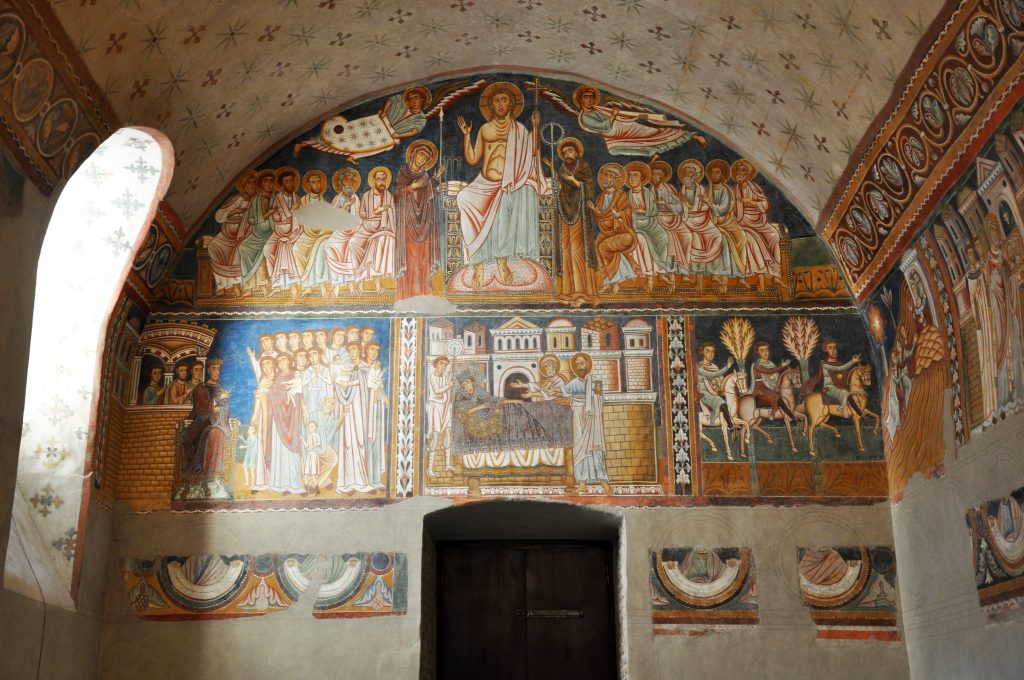

Still a cloistered convent today, it has a lovely Romanesque courtyard. But the real seller is the Chapel of St. Sylvester, which has a gorgeous 13th-century cycle of frescoes that are in a remarkably vivid and well-preserved state.
Just up the street from the Colosseum, the Basilica of San Clemente is a 12th-century basilica… built on top of a 4th-century basilica… built on top of first-century Roman buildings, including a Mithraic temple. Admire the gorgeous mosaic on the top floor, then descend below. It’s one of the coolest underground sites in Rome.
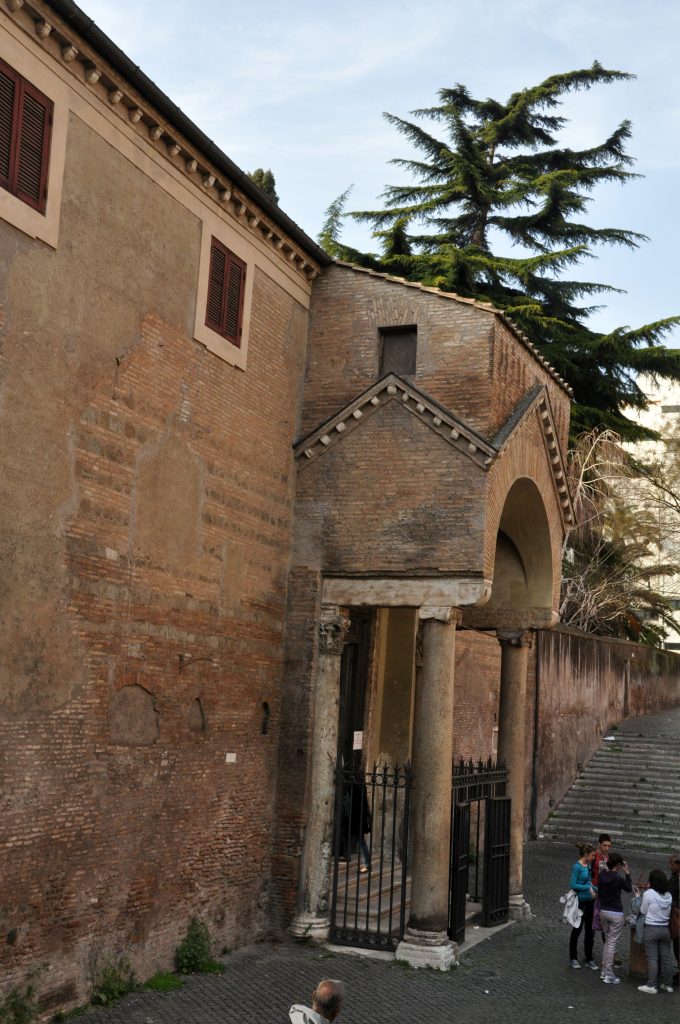

The downside? The cost. A couple of years ago, they upped the entrance to a hefty €10. That shouldn’t keep you from going in — even in a city as rich with history as Rome, this church really is unique. It does, though, mean I’d strongly recommend that you either take a guided tour or pick up a guide in the gift shop before you go down. It can be confusing to figure out what’s what otherwise.
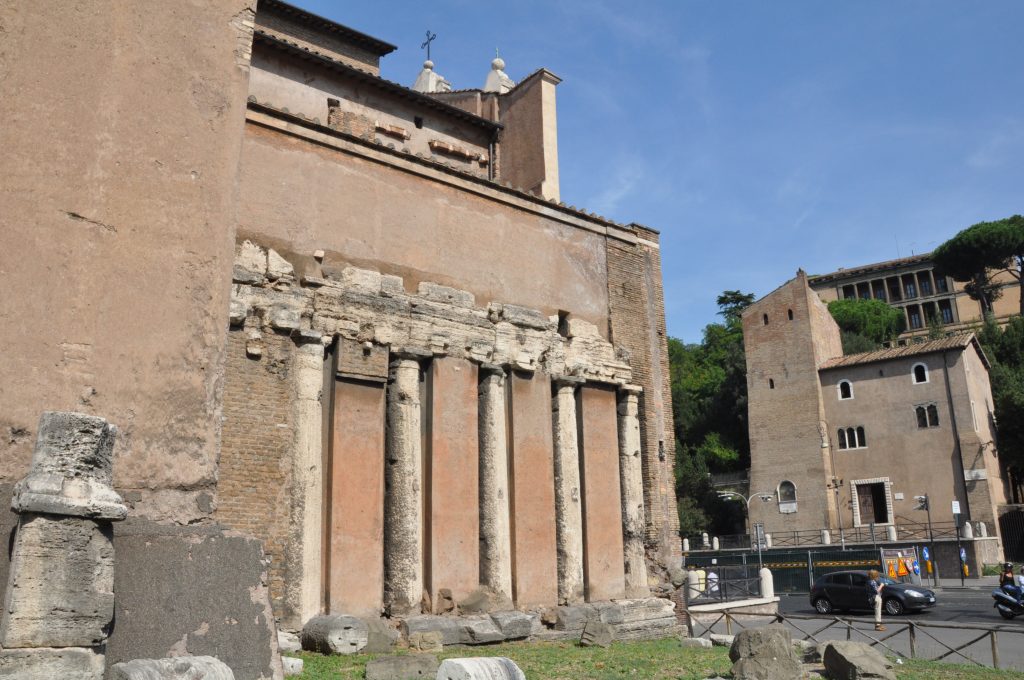

What makes the Basilica of San Nicola in Carcere unusual is that it was built incorporating three ancient, Republican-era temples — and you can still see their columns in the exterior.
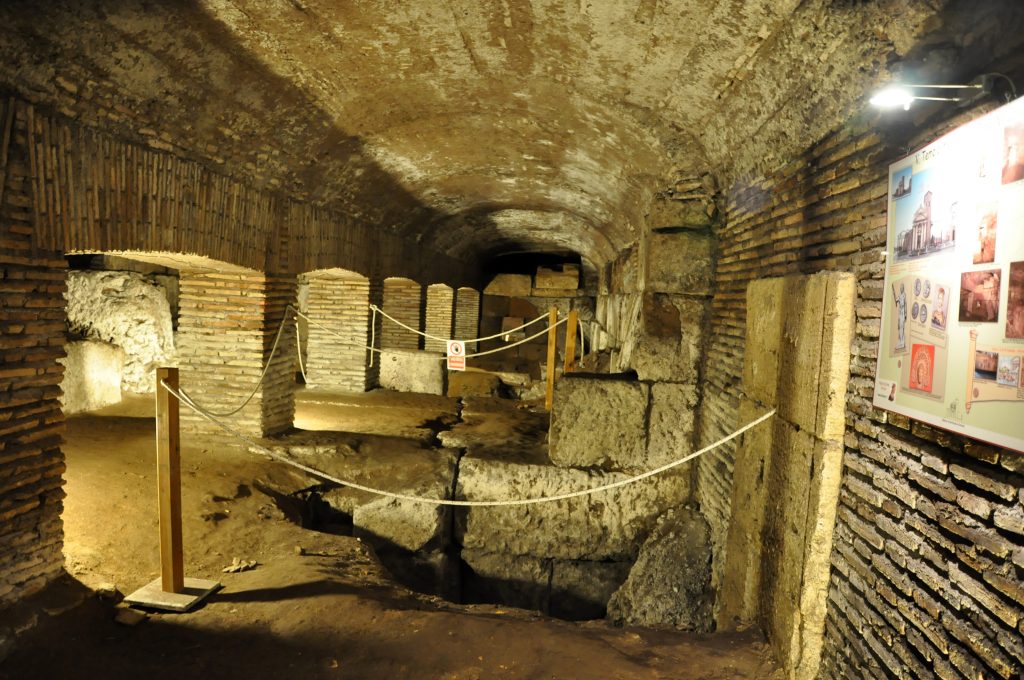

Plus, for just a couple of euros, you can descend into the underground to see the temples’ podiums and even ancient money-changers’ stalls. (Compare that to San Clemente’s new, steep €10 price…).
Pro tip: You’re around the corner from the Jewish Ghetto here, a lovely place for a stroll — and a strong choice for food. Give the tourist traps on Via Portico d’Ottavia a skip and head to Al Pompiere instead.
To be fair, most of my favorite churches in Rome are. But because it’s just out of the center — in an area frequented by students, not tourists — this is one that feels even more like a local secret.
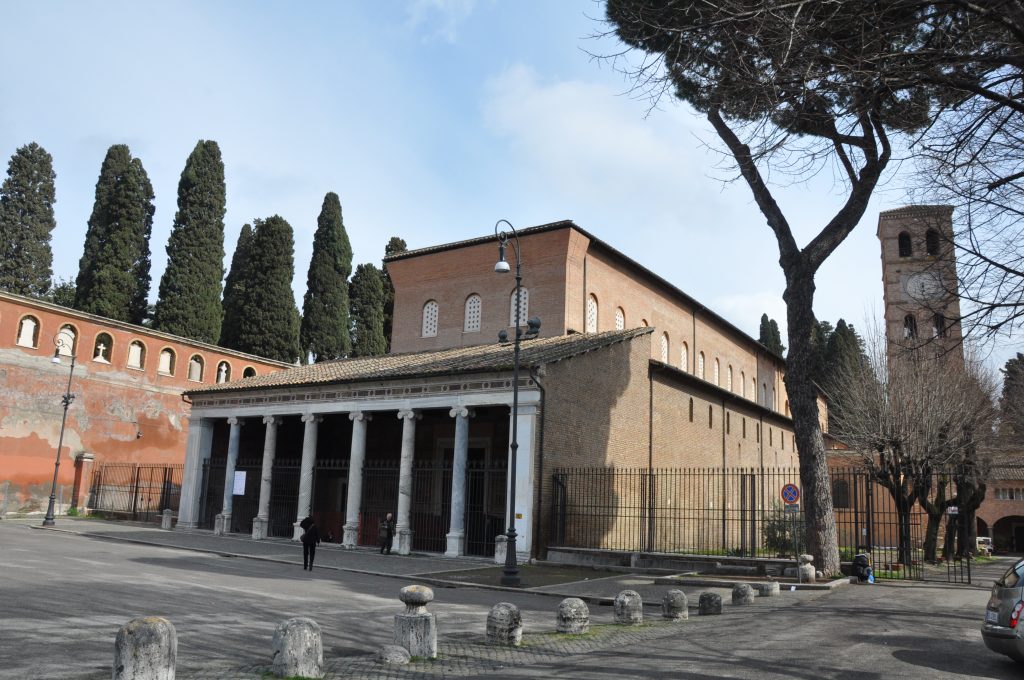

San Lorenzo fuori le Mura is a 5th-century church with vibrant Byzantine mosaics. And the remains of St. Lawrence, St. Stephen and St. Justin. And 13th-century frescoes on the exterior (below). And the slab on which Lawrence was ostensibly grilled to death in the 3rd century.
If that weren’t chilling enough, there’s always the cemetery next door to take a stroll in, too.


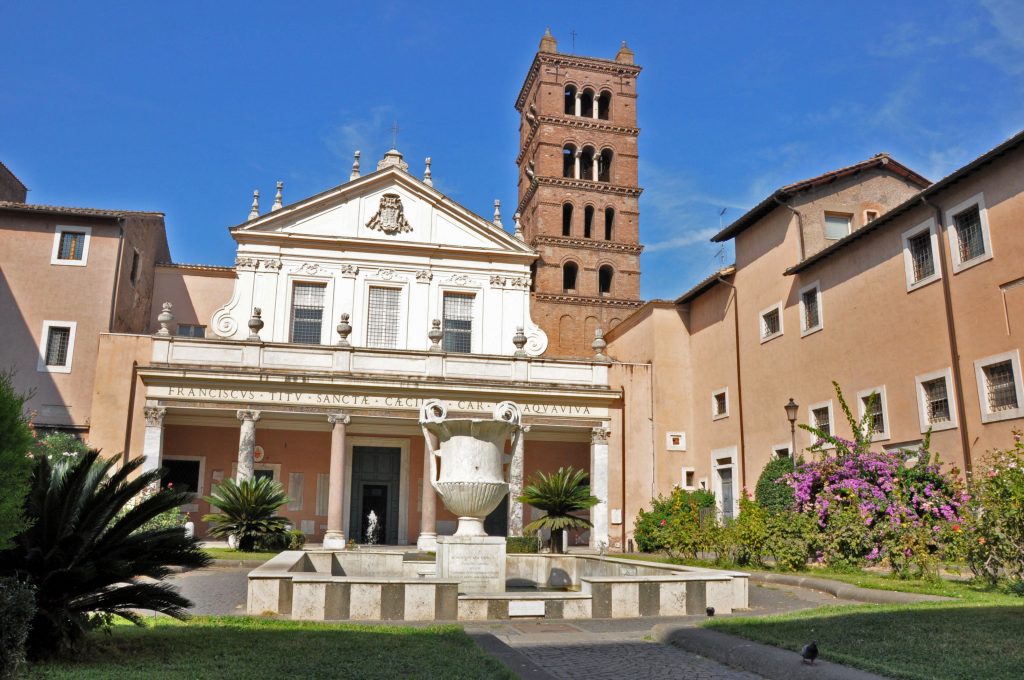

Built in the 9th century, on the spot where St. Cecilia was martyred in the 3rd century, the Church of Santa Cecilia in Trastevere has a laundry list of extraordinary objects. That includes a beautiful 9th-century mosaic, 13th-century frescoes by Pietro Cavallini, and excavations of two ancient Roman houses below that you can visit. It also has a famous sculpture by Maderno of Cecilia’s body as it was found — incorrupt — when exhumed in 1599. Not to mention one of the prettiest courtyards I’ve ever seen (above).
If you only make a couple of stops in Trastevere, this should be one of them. Truly.
It’s true that several churches in Rome have extraordinary Byzantine mosaics (see: Basilica of San Clemente, Basilica of Santa Prassede, Basilica of Santa Costanza…). But. It’s hard to beat the number, or quality, of glittering mosaics here at the Basilica of Santa Maria in Trastevere. The outside is decorated with 12th-century mosaics; the inside, 13th-century mosaics by the famed artist Cavallini.
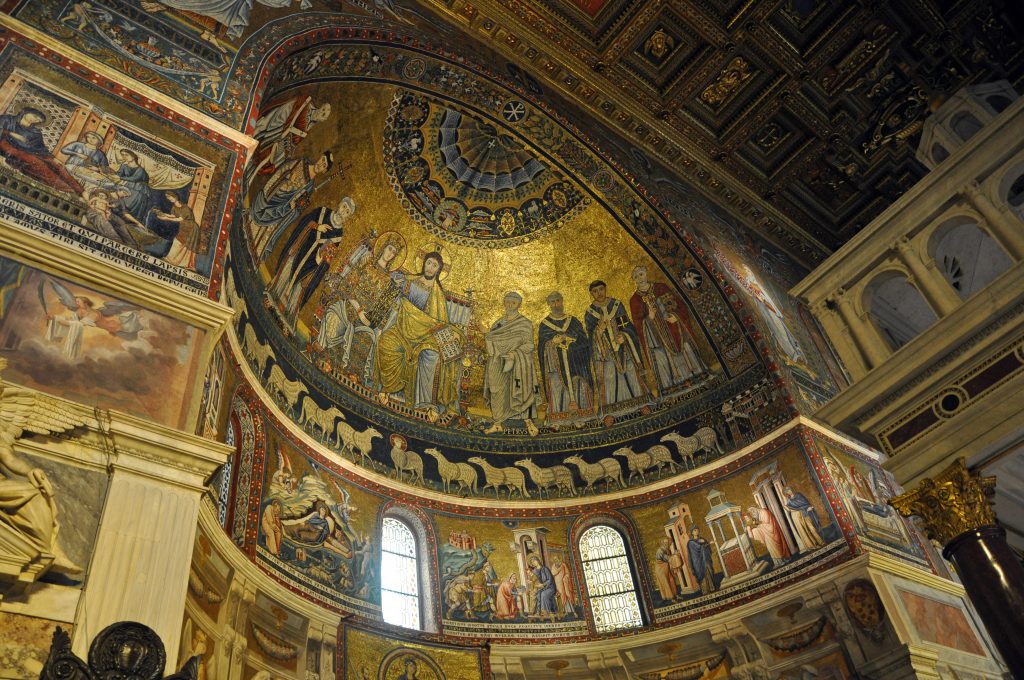

If that weren’t enough, this 4th-century church could be the first church in Rome in which Mass was openly celebrated. And it overlooks one of the loveliest, liveliest piazzas in not just Trastevere, but all of Rome, with the streets surrounding filled with restaurants and bars — meaning it’s the perfect place to duck in for a look-see before aperitivo or dinner.
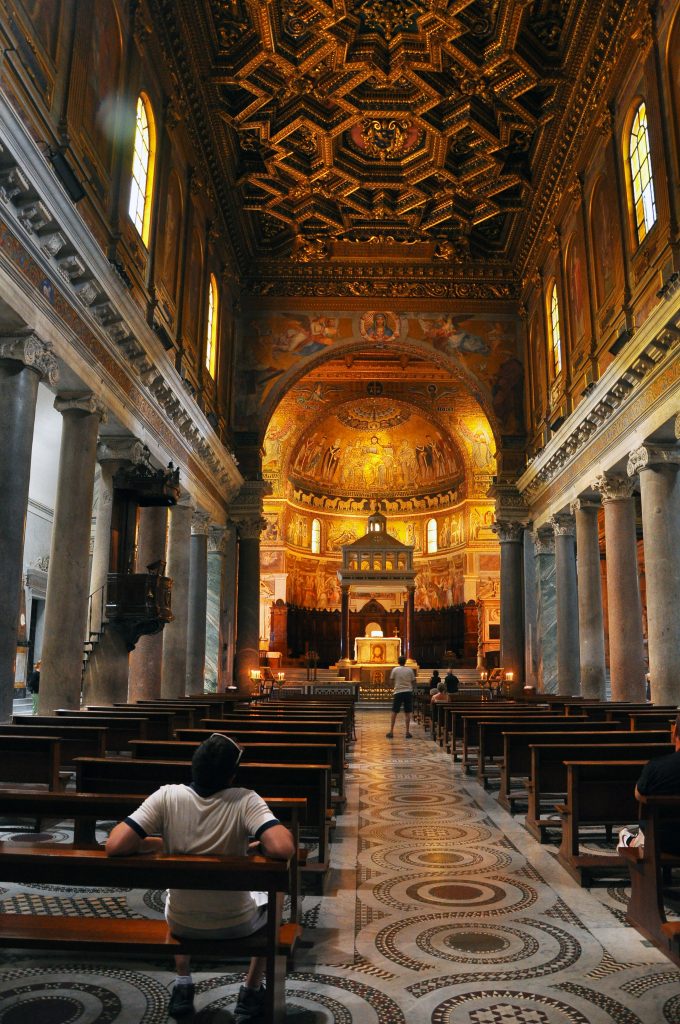

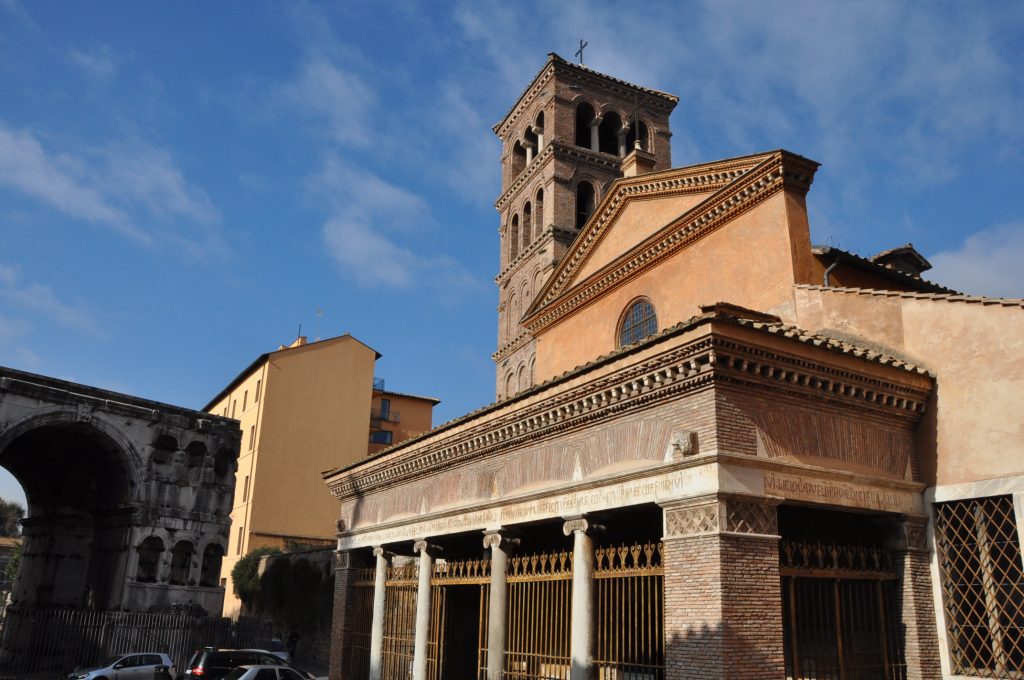

Don’t let its seeming simplicity fool you: San Giorgio in Velabro is a gem. Built in the 5th-century, today it’s a thoroughly Romanesque church, albeit one that boasts the bones of St. George and lovely frescoes from 1300. And, having survived a Mafia car bomb in 1993, it gets major points for endurance.
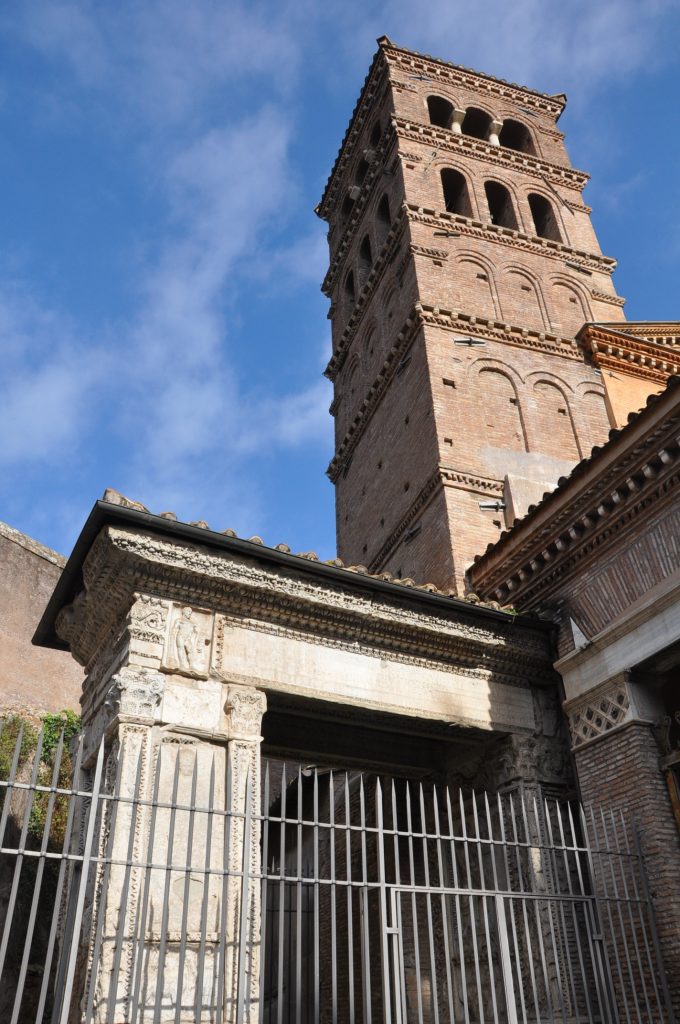

Pro tip: Take a close look at the ancient arch seemingly built into the left side of the church’s exterior. In particular, look for the spots where it seems like people were carved in, then scratched out. That’s because they were. After he became emperor, Caracalla had all memory of his brother — who he had killed — erased from monuments like this one.
Often overshadowed by its larger, more famous neighbor, the Basilica of Santa Maria Maggiore, the Basilica of Santa Prassede on the Esquiline (at the edge of Monti) is absolutely worth adding to your list. (Think of it as the Sainte-Chapelle to Notre Dame: Yes, you have to visit both, but who doesn’t love the Sainte-Chapelle even more?)
It’s pretty nondescript from the outside, but don’t let that fool you.
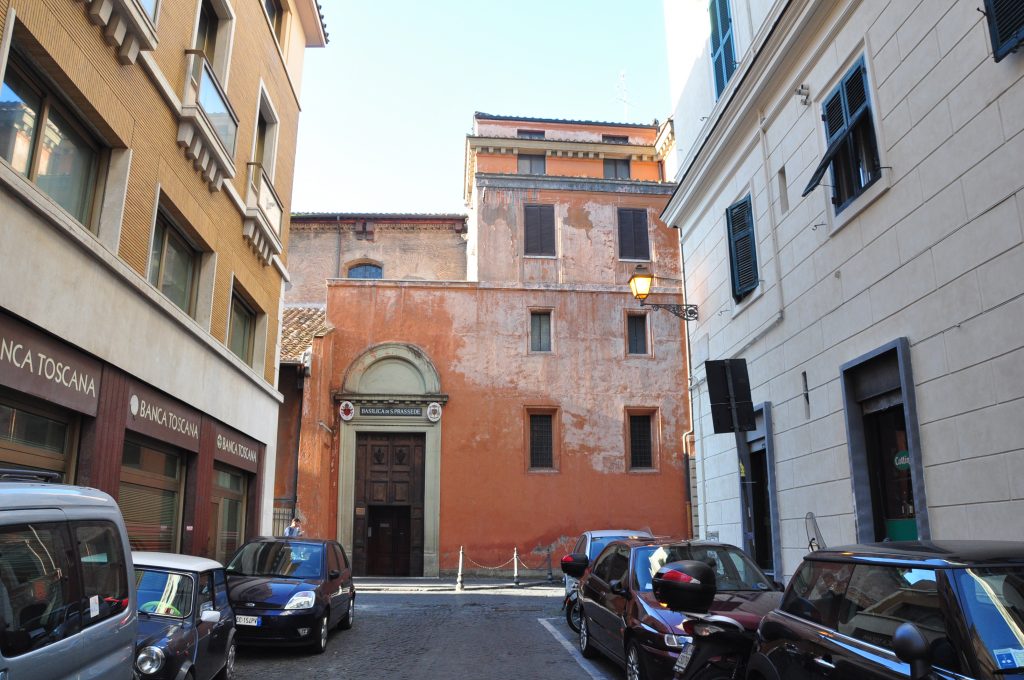

A 9th-century church that still retains its original frescoes and mosaics, this Rome church is a gem that, literally, sparkles. (This is one where you definitely want to bring some change to light up the mosaics).
Built on the spot where tradition holds Prassede hosted St. Peter in her house, it also has the tombs of the saints Prassede and Pudenziana. But, really, it’s all that glittering gold that gets me every time.


While it’s a little off the beaten path — albeit near the catacombs of Sant’Agnese, for anyone making a catacombs stop — it’s well worth the visit.
Rome’s only other round church, the Basilica of Santa Costanza was originally built as a mausoleum for Emperor Constantine’s daughter in the 4th century. Today, it’s one of Rome’s oldest churches. It’s also the only other round church in Rome, along with Santo Stefano in Rotondo (see above).
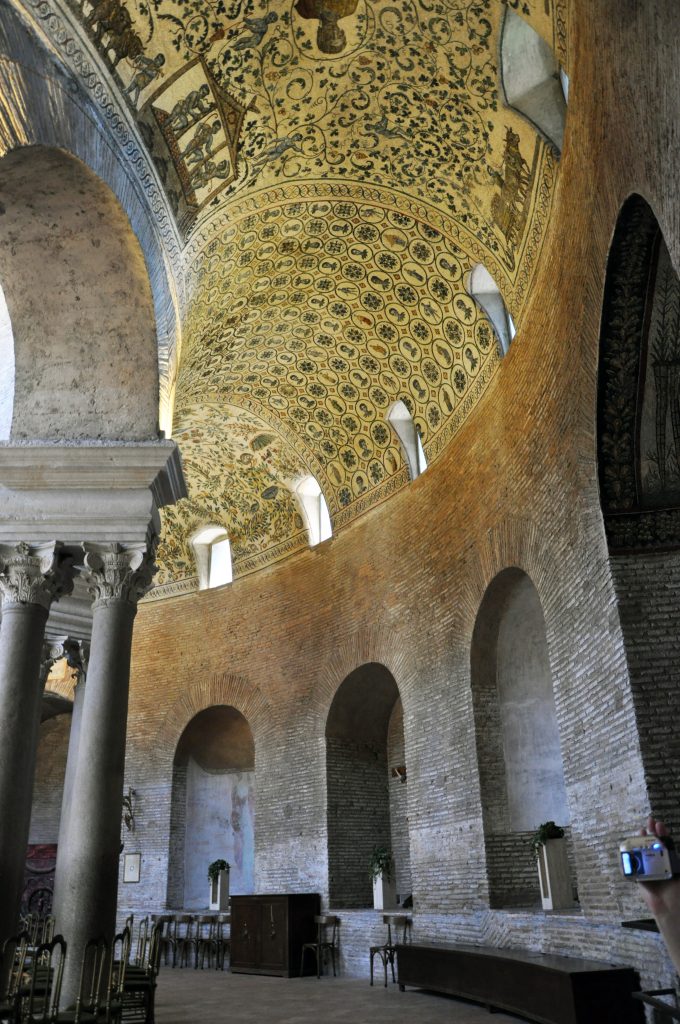

Better yet, it still has its original mosaics from the period, meaning it’s a fascinating stop for anyone interested in how Rome turned from paganism to Christianity.